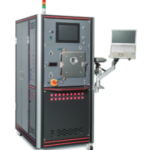
Vacuum uses units of atmospheric pressure, which have changed over history.
There are a lot of them, and some people who are not good at formulas may find them mind-numbing.
This article provides an explanation of such units of atmospheric pressure in an easy-to-understand manner, with some history.
We are always living with the air on our backs.
Many people are unconscious of this because it is too common and not visible to the eye, but air has weight and the force that holds it down is called pressure.
The pressure indicates how much force is applied per ㎡ of area.
Currently, [N/㎡] or [Pa] is used according to international (SI) units.
[N/㎡] is read as newton per square meter.
[N] is a unit of force.
[Pa] is read as pascal.
You may have heard that the central pressure of typhoons is expressed in [hPa] from weather forecasts.
This is the unit of atmospheric pressure [Pa] with [h] (hecto) meaning 100 times.
Throughout history, units of atmospheric pressure have changed.
Around the 17th century, when units of pressure were first used, it was [mmHg] (millimeter Hg).
This unit is based on experiments with mercury columns, and for a long time [mmHg] was used in Japanese science textbooks with pictures of mercury columns, while [mbar] (millibar) was used for weather forecasts.
Today, you may not be familiar with mercury columns, but thermometers used to be commonly made using mercury in the past, which are predominantly digital.
[Torr] unit was also used in the 20th century although most people are not familiar with it because it is only used in a few fields in Japan.
Although the definition of [Torr] is slightly different from [mmHg], this unit has been used in the same way as [mmHg], partly because it is based on a column of mercury.
We offer a variety of vacuum equipment such as sputtering equipment.





